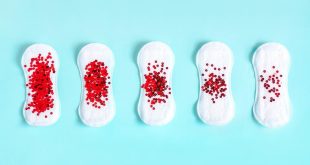
It’s slang for postpartum buttocks that have grown larger, saggier, or flatter than before. Reports have shown that many mothers experience this during and after pregnancy.
This change in the appearance of your butt is caused by a loss of butt fat, changes in your posture, changes in your gluteal muscles, prolonged sitting, and breastfeeding. All of which is a normal physical changes the body undergoes due to pregnancy and breastfeeding.
Weight gain and belly expansion are two factors that cause your butt to change during pregnancy but, changes in skeletal, postural, and alignment also play a role.
To accommodate their growing belly, pregnant women tend to tuck their buttocks under, protrude their hips forward, and sway their upper back backward. This causes muscular and postural imbalances, which can make the butt look flat.
Hormonal fluctuations can also have an impact on your body. The body produces more relaxing hormones during pregnancy. This relaxes the muscles, tendons, and ligaments near the pelvis to prepare for birth.
Another factor that changes the appearance of the butt is breastfeeding. The butt fat is especially high in omega-3 fatty acids, which are necessary for infant brain development.
And because it is richer than the rest of your body’s fat deposits, these brain-building fatty acids stored in your butt are extracted for breast milk production.
While these changes are unavoidable, they are normal, temporary, and, most importantly, fixable. Here is how:
1) Fix your posture
To regain optimal balance, the long-term solution for addressing alignment is to strengthen weak muscles (like your glutes!) and add length to tight muscles.
While that may require the help of a specialist, In the meantime, you can become more aware of your posture and make some simple changes.
If you have a sway posture (pelvis tucked, hips forward), practice bringing your hips back over your heels and relaxing your buttock muscles.
2) Nutrition
Maintain a well-balanced diet rich in nutrients and calories, especially if you’re breastfeeding. Avoid or limit sugary foods, drinks, solid fat, and processed foods.
Incorporate healthy food options like whole grains, Vegetables, fruits, low-fat dairy, lean protein, high-fiber foods, eggs, nuts, and seeds.
3) Stay active: Exercise and stretch
Muscle modifications are necessary for long-term butt transformation. Focused butt workouts are the most effective technique to modify the muscles in your butt (glute muscles).
To increase your activeness, develop your strength, and tone your muscles, try to engage in at least 150 minutes of moderate-intensity activity per week. There are many lower body exercises like glute bridges, hip thrusts, squats, and lunges that can be done at home.
Mild and simple stretches that are focused on the lower body are also a good way to activate and stretch tight hip and butt muscles.
4) Avoid sitting for long
Sitting for several hours a day exacerbates the muscle imbalances caused by pregnancy.
Your buttocks will remain weak and inactive, while your hip flexors will become tighter if you continue to sit for long hours postnatal.
Set a phone reminder to get up at least once every hour. Alternatively, invest in a fitness tracker that will remind you to stand every hour.
5) Don’t rush
Your body has gone through and is still going through a lot of normal changes, so don’t overdo it.
It is possible to transform your mom’s butt into a sculpted, toned bum. But start slowly by sticking to a healthy eating plan, staying active, and doing exercises that target your butt.
 Top Naija News: Nigerian News, Breaking News Nigeria and World News Top Naija News is a daily news publication in Nigeria, delivering the latest breaking news in Nigeria and around the world.
Top Naija News: Nigerian News, Breaking News Nigeria and World News Top Naija News is a daily news publication in Nigeria, delivering the latest breaking news in Nigeria and around the world.



